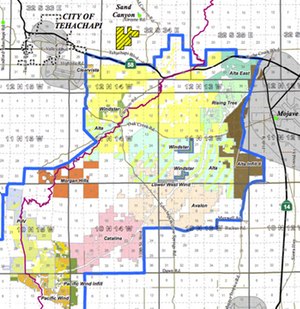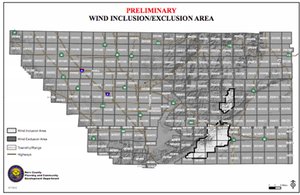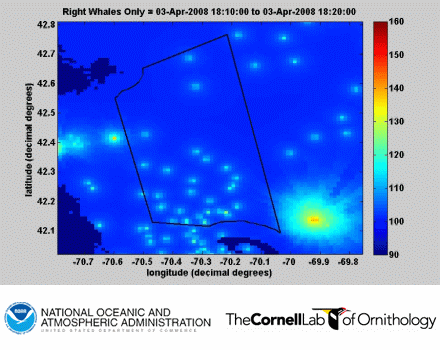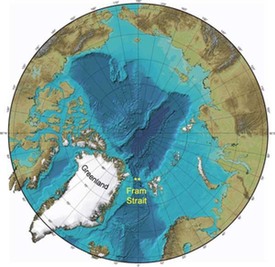Five years ago, the US led an effort to have the International Maritime Organization address the increasing problem of shipping noise as a contributor to the ocean’s rising background ambient noise levels, which reduces the effective communication area for many species of ocean life. The first couple of years were promising, beginning with the creation of a “high priority work programme” to be undertaken by a special Correspondence Group. The first report of the correspondence group, submitted in spring of 2009, along with a submission from IFAW and Friends of the Earth that identified the likelihood that the bulk of shipping noise comes from a small percentage of the noisiest ships of each size, laid the groundwork for rapid adoption of the proposed voluntary guidelines for ship quieting.
This year’s IMO newsletter, though, tells the sad bureaucratic story of how these sorts of initiatives can wither on the vine. The Marine Environmental Protection Committee this year merely “reaffirmed the previous agreement that non-binding technical guidelines designed to reduce the incidental introduction of underwater noise from commercial shipping, be developed as a means to reduce the potential adverse impacts of this noise on marine life. The Committee agreed to keep this item on its agenda for MEPC 64.” It appears that the Ship Design and Equipment Subcommittee has been charged with the task of drafting the voluntary guidelines, but their report makes no mention of this work.
During the 2000’s, NOAA made great strides in acknowledging the central role that shipping noise plays in any consideration of ocean noise management; it were these efforts that led to the initial impetus to get the IMO, which regulates global shipping, to begin to address it. It’s sad to see how easily such efforts can lose steam. Perhaps we can take heart from a statement made by IMO spokeswoman Natasha Brown after the release of a study this spring that linked stress levels in whales to ocean noise: “The Marine Environment Protection Committee (MEPC) of the IMO, when it meets for its 63rd session, will review a number of submissions relating to noise from commercial shipping and its adverse impact on marine life. The MEPC has previously agreed on a need to develop non-binding, technical guidelines and consider solutions to reduce the incidental introduction of underwater noise from commercial shipping, so the issue is very much on the IMO’s agenda and governments are welcome to submit relevant information and/or report to MEPC.” While it appears that the MEPC did not actively engage the issue this year, it is indeed still on their radar, though perhaps not as brightly as it was a few years back.
For more on the glory days of efforts to address shipping noise, see the AEI’s Ocean Noise 2009 Special Report, pages 18-23.


 On the map to the left, yellow represents the existing development pictured above, and the other colors each represent a new development. For those living within this roughly 11 x 17 mile Wind Inclusion Area, the prospect is daunting. April Biglay, a local activist who’s been encouraging the county to proceed with caution, attended the first meeting, and said, “I think it’s bittersweet. I think the county is making a huge effort to get under control the production of wind energy. At least the studies are in. At least they are looking at these areas, I mean it’s better than nothing.”
On the map to the left, yellow represents the existing development pictured above, and the other colors each represent a new development. For those living within this roughly 11 x 17 mile Wind Inclusion Area, the prospect is daunting. April Biglay, a local activist who’s been encouraging the county to proceed with caution, attended the first meeting, and said, “I think it’s bittersweet. I think the county is making a huge effort to get under control the production of wind energy. At least the studies are in. At least they are looking at these areas, I mean it’s better than nothing.” 


 When a University of Washington researcher listened to the audio picked up by a recording device that spent a year in the icy waters off the east coast of Greenland, she was stunned at what she heard: whales singing a remarkable variety of songs nearly constantly for five wintertime months. In a paper just published in the journal Endangered Species Research, and freely available online, Kate Stafford and her co-authors report on acoustic monitoring that took place in the winter of 2008-9 in the Fram Strait, between Greenland and Spitzbergen, a key channel for water circulation between the Arctic and Atlantic Oceans.
When a University of Washington researcher listened to the audio picked up by a recording device that spent a year in the icy waters off the east coast of Greenland, she was stunned at what she heard: whales singing a remarkable variety of songs nearly constantly for five wintertime months. In a paper just published in the journal Endangered Species Research, and freely available online, Kate Stafford and her co-authors report on acoustic monitoring that took place in the winter of 2008-9 in the Fram Strait, between Greenland and Spitzbergen, a key channel for water circulation between the Arctic and Atlantic Oceans.